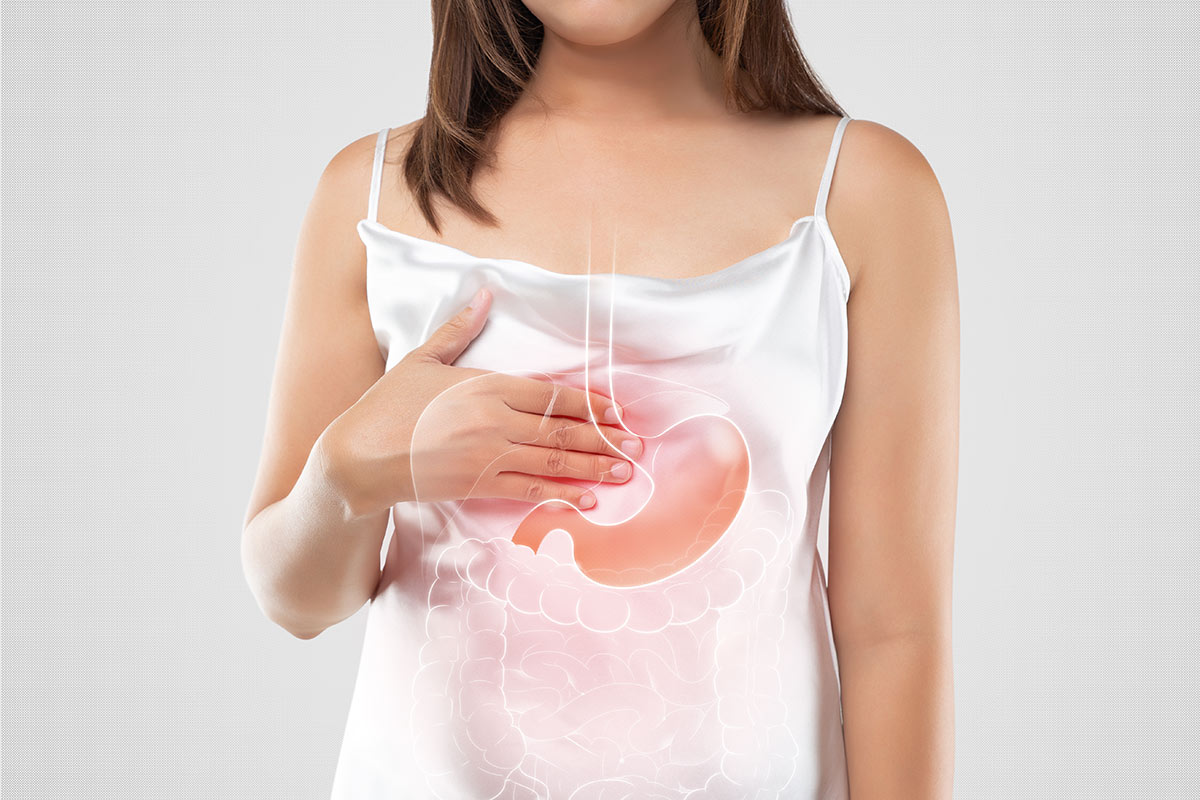What is Gastroesophageal Reflux Disease?

What is Gastroesophageal Reflux Disease?
Gastroesophageal reflux disease (GERD) is a chronic condition that affects the digestive system. It affects people of all ages, from infants to older adults. It occurs when the lower esophageal sphincter (LES), a ring of muscle between the esophagus and the stomach, weakens or relaxes inappropriately. This allows stomach acid and partially digested food to flow back into the esophagus, causing discomfort and various symptoms.
Causes of Gastroesophageal Reflux Disease
The primary cause of GERD is a weakened or relaxed lower esophageal sphincter (LES). This muscle should tighten after food passes through it, preventing stomach acid from flowing back into the esophagus.
However, when the lower esophageal sphincter becomes weak or relaxes inappropriately, acid reflux occurs. Hiatal hernia, a condition where a portion of the stomach protrudes through the diaphragm, can also contribute to the development of GERD.
Certain risk factors increase the likelihood of developing GERD, including obesity, pregnancy, smoking, and certain medical conditions such as hiatal hernia.
Lifestyle factors such as overeating, and consuming trigger foods and drinks can exacerbate the symptoms of GERD.
Symptoms of Gastroesophageal Reflux Disease
GERD can manifest in various ways, and the severity of symptoms may vary among individuals.
The most common symptoms include:
- Heartburn, which is a burning sensation in the chest or throat.
- Regurgitation, where stomach contents rise back up into the mouth.
Other symptoms include:
- Chest pain
- Difficulty swallowing (dysphagia)
- Chronic cough
- Hoarseness
- Globus sensation (a feeling of a lump in the throat)
Diagnosis of GERD
To diagnose GERD, a healthcare professional will evaluate the patient’s medical history and conduct a physical examination. Diagnostic tests such as endoscopy, pH monitoring to measure acid levels in the esophagus, and imaging studies may be recommended to assess the extent of damage and rule out other conditions.
Treatment of Gastroesophageal Reflux Disease
There are various treatment options available to manage GERD and alleviate its symptoms.
Lifestyle Modifications
One of the first steps in managing GERD is making lifestyle modifications. This includes adopting healthy habits that can help reduce the frequency and severity of symptoms. Some lifestyle changes that may be beneficial for individuals with GERD include:
- Dietary Modifications: Avoiding trigger foods and beverages such as spicy foods, citrus fruits, chocolate, coffee, and alcohol can help minimize acid reflux. It’s also recommended to eat smaller, more frequent meals and avoid lying down immediately after eating.
- Weight Management: Maintaining a healthy weight can help reduce pressure on the stomach and lower esophageal sphincter (LES), decreasing the likelihood of acid reflux.
- Elevating the Head of the Bed: Raising the head of the bed by 6 to 8 inches can help prevent stomach acid from flowing back into the esophagus while sleeping.
- Smoking Cessation: Quitting smoking is not only beneficial for overall health but can also improve GERD symptoms, as smoking can weaken the LES.
Medications
In addition to lifestyle modifications, medications are commonly prescribed to manage GERD. These medications help reduce the production of stomach acid or neutralize it. Some common medications used in the treatment of GERD include:
- Proton Pump Inhibitors (PPIs): PPIs are highly effective in reducing stomach acid production. They provide long-lasting relief and are available both over the counter and by prescription.
- H2 Receptor Blockers: H2 blockers work by reducing the amount of acid produced by the stomach. They are available in both prescription and over-the-counter strengths.
- Antacids: Antacids provide quick but temporary relief by neutralizing stomach acid. They are available without a prescription and can be taken as needed.
Surgical Interventions
In cases where lifestyle modifications and medications do not effectively manage GERD, surgical interventions may be considered. Some surgical options for GERD treatment include:
- Fundoplication: This procedure involves wrapping the upper part of the stomach around the LES to strengthen it and prevent acid reflux.
- LINX Device: The LINX device is a small ring of magnetic beads placed around the LES. It helps keep the sphincter closed to prevent reflux while allowing food to pass through.
- Endoscopic Treatments: Minimally invasive endoscopic procedures can be performed to strengthen the LES or repair a hiatal hernia, a common condition associated with GERD.
It is important to consult with a healthcare professional to determine the most suitable treatment approach based on individual circumstances and the severity of GERD symptoms.
Sources:
Gastroesophageal Reflux Disease
Acid Reflux (GER & GERD) in Adults
Gastro-oesophageal reflux disease (GORD)
